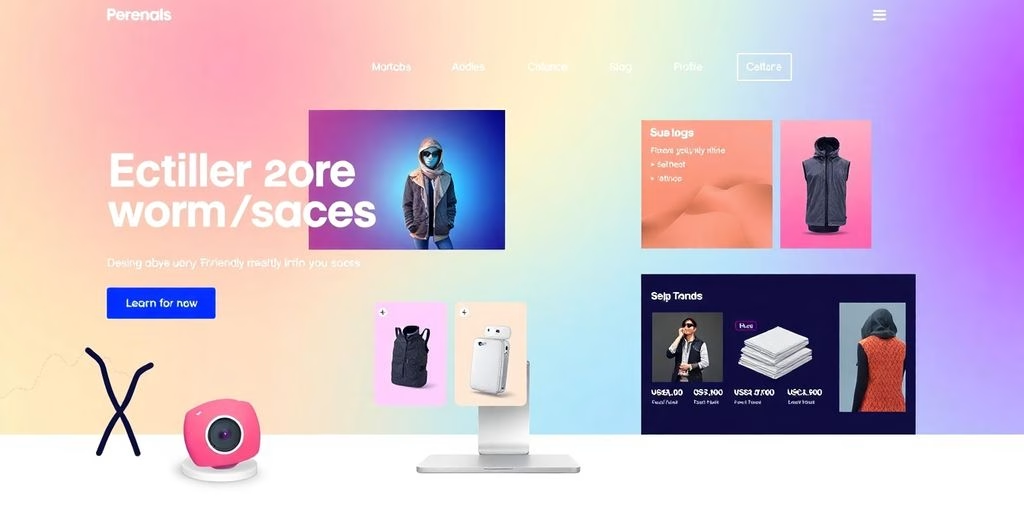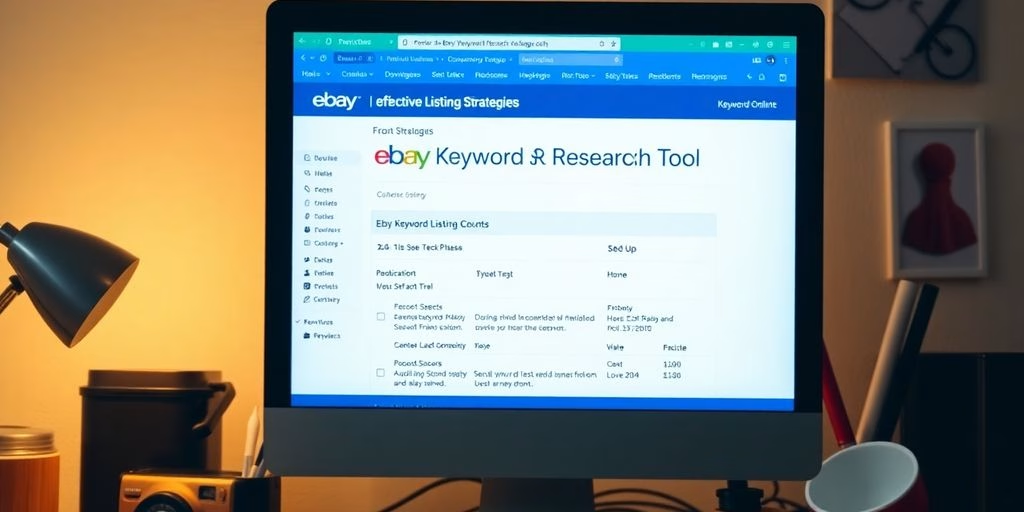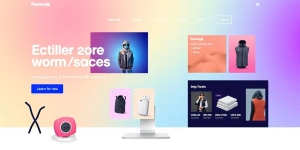In the digital age, a well-crafted website portfolio can be a powerful tool for professionals to showcase their expertise and attract opportunities. Creating a compelling portfolio involves more than just displaying your work; it requires strategic planning, engaging storytelling, and attention to detail. This step-by-step guide is designed to help you construct a portfolio that not only highlights your best work but also tells your unique story, ensuring that you stand out in a crowded marketplace.
Table of Contents
ToggleKey Takeaways
- Identify and articulate your unique brand to create a cohesive and memorable portfolio.
- Curate only your best work that demonstrates your skills and the high-quality results you deliver.
- Employ storytelling to provide context and depth to the projects, making them more relatable and impactful.
- Choose the right platform and design elements that align with your brand and enhance user experience.
- Regularly update your portfolio with new projects and improvements based on feedback to showcase your growth.
The Blueprint of a Stellar Portfolio

Defining Your Unique Brand
In the realm of digital portfolios, your brand is your story, your ethos, and your unique selling proposition all rolled into one. Unearth your brand identity by defining unique positioning, mission, and vision. Craft a visual identity that resonates and compose messaging that echoes brand personality.
Creating consistent branding isn’t just about a logo or a color scheme; it’s about weaving a narrative that captivates your audience. Engaging with your audience through social media graphics and interactive content is key for standing out. Visual identity and interactive content are not just embellishments; they are essential for audience connection.
Your portfolio is the canvas, and your brand is the palette with which you paint your professional story.
Select specific examples from your work that embody your brand’s style and goals. Explain your content creation process, and if possible, include relevant success metrics to demonstrate the impact of your work. This transparency not only showcases your approach but also builds trust with potential clients or employers.
Curating Your Finest Work
When it comes to curating your finest work, think of your portfolio as an exclusive gallery where only the crème de la crme is on display. Select pieces that not only shine individually but also complement each other, creating a cohesive narrative of your skills and style. Here’s how to ensure your portfolio is nothing short of a masterpiece:
- Gather your best work: Your portfolio should be a testament to your expertise, so include projects that highlight your proficiency and range. Remember to weave in client testimonials and the impact of your work.
- Showcase diversity: A variety of content types—videos, images, written posts—demonstrates your versatility and ability to engage different audiences.
- Organize with intent: Structure your portfolio logically, using categories or sections for easy navigation, keeping visitors captivated and making your work memorable.
By meticulously selecting and organizing your work, you create a portfolio that not only showcases your talents but also tells the story of your professional journey.
The Art of Storytelling Through Projects
In the realm of website portfolios, the narrative woven through your projects is the silent ambassador of your brand. Each project is a chapter in your professional saga, and how you tell that story can captivate your audience or leave them scrolling for more. Start with the essence of your project: a clear, concise introduction that sets the stage for the drama to unfold.
Your portfolio isn’t just a collection of work; it’s a curated exhibition of your journey, skills, and triumphs.
To truly engage, consider these elements:
- Compelling Stories: Use client testimonials or user stories to demonstrate the impact of your work.
- High-Quality Visuals: Integrate images and videos that bring your projects to life.
- Demonstrations: If relevant, include tutorials or demos that highlight your expertise.
Remember, a portfolio is more than a showcase; it’s a platform for storytelling. By integrating web design strategies like visual storytelling and bold typography, you create a memorable experience that resonates with your audience. And don’t shy away from the technicalities; flaunt your skills in design tools and technologies, ensuring your narrative is as robust as your expertise.
The Portfolio Construction

Choosing the Right Platform
In the digital age, your portfolio is often the first impression you make on potential clients or employers. Choosing the right platform is like picking the perfect frame for your masterpiece; it should enhance, not detract from your work. Consider platforms that not only showcase your skills but also resonate with your brand and professional goals.
- Personal websites offer complete control and professionalism.
- Social media platforms are great for reach and engagement.
- Specialized portfolio sites cater to niche markets and communities.
Each platform has its quirks and features, and it’s essential to weigh them against your needs. Does it allow for image optimization and browser caching? Can you weave in clear navigation and consistent design elements?
Finally, let’s talk turkey—pricing. While some platforms flaunt free plans, others might nibble at your budget with monthly fees. It’s a balancing act between cost and functionality, so compare the value each platform offers to ensure it aligns with your financial comfort zone.
Design Elements That Speak Volumes
In the realm of web portfolios, design is a silent ambassador of your brand. It’s not just about making things look pretty; it’s about crafting an experience that resonates with your audience. Here’s how to make your design elements sing:
- Consistency is your best friend. Align your colors, fonts, and visual elements to weave a cohesive narrative about who you are as a professional.
- Embrace whitespace. It’s the canvas upon which your work can truly stand out, providing a clean backdrop that emphasizes your projects.
- Consider the user’s journey. From the first glance to the final click, every aspect of your design should guide and delight.
Your portfolio is not just a collection of work; it’s a curated exhibition of your journey, skills, and potential.
Remember, UI design is crucial for engaging digital experiences. It’s not just about aesthetics; it’s about functionality, accessibility, and creating a seamless user journey. And when it comes to calls to action, make them count. Crafting CTAs with actionable language and strategic placement can be the difference between a visitor and a conversion.
Navigation: Your Guiding Star
In the cosmos of web design, navigation is your North Star, leading visitors through the galaxy of your content with ease and precision. A user-friendly navigation system is not just a convenience—it’s a cornerstone of a successful website portfolio. Think of it as the silent guide that whispers, ‘This way to brilliance.’
- Home: Your portfolio’s welcoming front porch.
- About: A peek into the creator’s universe.
- Work: The showcase of your stellar achievements.
- Blog: Insights and stories behind the scenes.
- Contact: The bridge to new galaxies (and clients).
A simple navigation system encourages visitors to explore your website’s content. That way, they can find what they’re looking for much easier, potentially boosting your site’s conversion rate.
Consistent and clear navigation, strategic layout, and responsive design are key for user-friendly website structure. Clarity and consistency enhance user experience and engagement, guiding visitors seamlessly through the site. Customize your websitr portfolio section to showcase your best work, including detailed project descriptions, images, and links to live demos or source code, ensuring that your visitors are not just passing comets but engaged explorers of your world.
Content That Captivates

Crafting Case Studies with Panache
A case study is more than a showcase; it’s a narrative that demonstrates your prowess and problem-solving skills. Crafting a captivating design for landing pages is crucial, and the same goes for your case studies. They should exude consistency, flaunt an intuitive layout, and boast high-quality visuals. And let’s not forget the strong CTA—mastering this is key for high conversions.
When you’re crafting your case studies, think of them as your portfolio’s leading actors. They need to perform well to captivate your audience. Here’s a quick checklist to ensure they’re Oscar-worthy:
- Identify the problem you tackled
- Outline your creative process
- Highlight the impact and results
- Include client testimonials, if available
Your case studies should not only inform but also inspire. They are the perfect opportunity to demonstrate your expertise and the value you bring to the table.
If you’re a creative, consider showing a broader range of projects. This can be done by using a website portfolio gallery in addition to detailed case studies that provide more depth. Remember, a well-crafted case study can be the difference between a potential client lingering on your site or moving on to the next.
The Secret Sauce of Engaging Descriptions
In the culinary world of website portfolios, engaging descriptions are the secret sauce that can make your work irresistible. Crafting content that captivates is not just about what you say, but how you say it. Your descriptions should be a blend of creativity and clarity, serving up your unique value proposition with a side of personality.
- Write descriptive captions that provide context and insights into your work. Share the story behind each piece, and sprinkle in interesting anecdotes that resonate with your audience.
- Ensure your design is clean and distraction-free, highlighting your content and making it easy for visitors to explore.
Your portfolio is not just a collection of work; it’s a narrative of your professional journey. Each description should invite the reader into a chapter of your story, making them eager to turn the page.
Remember to optimize for discoverability. Use descriptive URLs, meta tags, and integrate SEO best practices like XML sitemaps to guide search engines to every page of your portfolio. This technical garnish will ensure your website portfolio is not only delightful to read but also easy to find.
Balancing Personality with Professionalism
In the realm of website portfolios, the tightrope walk between showcasing your personality and maintaining professionalism is a performance worth mastering. Your website portfolio is not just a showcase of your skills, but a reflection of your personal brand. It’s essential to inject your unique voice into your portfolio, ensuring that it resonates with your audience while upholding a professional demeanor.
- Define your unique voice and tone
- Showcase your specialization with content
- Maintain a professional attitude with clients and brands
Your portfolio should be a harmonious blend of personal flair and professional polish, creating a narrative that is both engaging and respectable.
Remember, while your website portfolio is a space for self-expression, it’s also a business tool. Striking the right balance can turn a simple collection of projects into a compelling story of your journey. It’s about finding that sweet spot where creativity meets credibility, and where your digital persona shines without overshadowing the substance of your work.
Essential Add-Ons for Your Website Portfolio

Integrating a Seamless Search Function
In a website portfolio, where the average attention span competes with a goldfish, your portfolio must cater to the impatient user. A search function isn’t just a nice-to-have; it’s a necessity. It’s the digital equivalent of a friendly librarian who can instantly locate the exact piece of work your visitor is looking for. Here’s why:
- It enhances user experience by allowing quick access to relevant content.
- It supports content discoverability, crucial for showcasing your breadth of work.
- It reflects technical proficiency, signaling to potential clients that you’re up to date with modern web practices.
A well-implemented search feature can be the difference between a fleeting visit and a deep dive into your professional world.
While adding a search bar might seem daunting, it’s often as simple as selecting the right plugin or widget from your chosen platform. For instance, tools like Jetpack or Yoast SEO not only offer search functionalities but also assist with site speed and optimization—key factors in keeping your website portfolio at the top of the SEO game.
Menus That Lead to Discoveries
A well-crafted menu is your visitor’s compass, guiding them through the landscape of your website portfolio with ease and intention. Menus should be intuitive, leading to discoveries of your work that feel both serendipitous and seamless. Consider the navigation system as a reflection of your organizational skills and design sensibility.
- Use sub-menus or dropdowns to organize additional items or categories efficiently.
- Prioritize clarity and avoid overcrowding the menu, as it can confuse visitors.
A simple navigation system encourages visitors to explore your website’s content, potentially boosting your site’s conversion rate.
Remember, a menu isn’t just a list; it’s a curated journey through your professional story. By implementing a filter system or a search bar, you enable visitors to find their desired content faster, enhancing the user experience. Consistent terminology throughout your website portfolio will minimize confusion and help users quickly and easily find the information they seek.
Contact Information: The Gateway to Opportunities
In the digital realm, your contact page is the virtual handshake that invites future collaborations. Make it memorable, make it you. It’s not just about listing an email address; it’s about crafting an experience that resonates with your visitors. Here’s how:
- Personalize your greeting; a warm welcome can set the tone.
- Detail the ways to reach you: email, phone, carrier pigeon (just kidding, unless…? 🐦).
- Suggest a reason to get in touch, like discussing a project or just saying hi.
Your contact page is your open door policy in action. It’s where opportunities knock and connections begin.
Remember, a contact page devoid of personality is like a business card left blank. Fill it with the essence of your brand and watch as it becomes more than a formality—it becomes a conversation starter.
Keeping Your Website Portfolio Fresh

Iterate, Update, Elevate
In the digital realm, stagnation is akin to invisibility. Regular updates are crucial for website portfolio maintenance and security, ensuring your website portfolio remains a vibrant showcase of your evolving talents. Think of your website portfolio as a garden that requires constant tending; prune the outdated, fertilize the fresh, and cultivate new growth to keep it flourishing.
- Ensure design aligns with brand objectives by auditing visual assets, scrutinizing layout, and evaluating CTAs.
- Highlight the Impact: Quantify the impact of your solutions, such as increased user engagement or improved conversion rates.
- Reflect on Lessons Learned: Discuss what you learned from the project and how it has influenced your design approach moving forward.
By embracing the cycle of iteration, your portfolio not only stays up-to-date but also demonstrates your commitment to excellence and personal growth. It’s not just about adding the latest bells and whistles; it’s about refining your narrative and reinforcing your brand’s message with every update.
Harnessing Feedback for Growth
Feedback is the breakfast of champions, and in the world of portfolio websites, it’s a feast you can’t afford to skip. Embrace the constructive criticism and praise alike; both are invaluable in sculpting your online presence. A portfolio is never static, and neither should be your approach to improvement. Here’s how to turn feedback into your growth engine:
- Solicit feedback actively from peers, clients, and your audience. Make it easy for them to share their thoughts by providing a simple feedback form or contact method.
- Analyze the feedback for common themes and actionable insights. This will help you identify areas for enhancement.
- Implement changes based on feedback, but ensure they align with your brand and goals. It’s a balancing act between staying true to your vision and being adaptable.
By integrating feedback into your portfolio’s evolution, you’re not just updating a website; you’re refining a living testament to your professional journey.
Remember, feedback isn’t just about what’s on the screen. It’s about the user experience, the SEO benefits of client testimonials, and the trust you build with your audience. Keep testing and improving, because a portfolio that grows with you is a portfolio that stands out.
Showcasing Your Journey: Then and Now
Your portfolio is not just a gallery; it’s a narrative of your evolution. Boldly display the timeline of your progress, from the early days to your current triumphs. This isn’t just about showing off; it’s about demonstrating the breadth of your experience and the depth of your commitment to your craft.
- Early Projects: The seeds from which your skills blossomed.
- Pivotal Moments: Turning points that shaped your career trajectory.
- Recent Triumphs: Your latest and greatest achievements that speak volumes.
Your website portfolio is a testament to your journey, a curated collection that speaks to your relentless pursuit of excellence and growth.
By juxtaposing your past work with your present, you give potential clients and employers a panoramic view of your capabilities. It’s not just about the web development work you’ve done, but also about the story behind it. Each project is a chapter, each skill a character, coming together to tell the tale of a passionate professional who’s always on the move.
As market trends shift and new opportunities emerge, it’s crucial to stay ahead of the curve. Contact us now to discover how our expert insights and tailored strategies can help you maintain a vibrant and profitable portfolio. Don’t let your investments grow stagnant—refresh your approach with us today!
Conclusion
And there you have it, folks—the digital breadcrumbs to crafting a portfolio that’s as impressive as a peacock’s plumage in full display. Remember, your online portfolio is your professional handshake, your visual voice, and your career’s highlight reel all rolled into one sleek, clickable package. So, keep it fresh, keep it you, and most importantly, keep it brimming with your best work. Whether you’re a wordsmith, a design maven, or a maestro of the visual arts, let your portfolio be the magnet that draws in opportunities and the mirror that reflects your evolving mastery. Now, go forth and conquer the digital realm with your stunning portfolio—may it be the launchpad for your next great adventure!
FAQs
What is the purpose of a website portfolio?
A website portfolio is designed to showcase your skills, expertise, and best work, acting as a powerful tool to impress potential employers or clients and differentiate you from the competition.
How do I define my unique brand for my website portfolio?
Defining your unique brand involves understanding your strengths, style, and the value you provide. It’s about creating a consistent message that resonates with your target audience.
What platforms can I use to create my website portfolio?
You can use platforms like Adobe Portfolio, Dribbble, or Behance to create and host your portfolio, each offering different features and community engagements.
How often should I update my website portfolio?
You should continuously update and refine your portfolio based on feedback and new projects to showcase your growth and improvement over time.
What are the key elements of a compelling case study in a portfolio?
A compelling case study should highlight the problem, your design process, the solutions you provided, and the impact of your work, all presented in a detailed and engaging manner.
How can I balance personality with professionalism in my website portfolio?
Balancing personality with professionalism involves showcasing your individuality and creativity while maintaining a clear, concise, and organized presentation that reflects your professional capabilities.









































































































